John Wolf Brennan : The OFN Interview
by Ludwig vanTrikt
5 September 2005
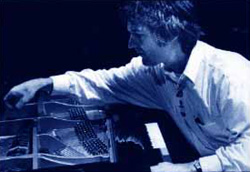 Pianist and composer John Wolf Brennan, born in Dublin, Ireland, has been widely acclaimed for his distinctive style, one marked by a deep interest in archeology, the avant-garde, and an ongoing investigation of his Celtic roots. His compositions cover a wide spectrum of musical concepts and methods, ranging from piano pieces to vocal scores; from chamber to orchestral works for both classical and jazz ensembles. Ludwig vanTrikt chatted with Brennan in February 2005, touching on subjects as diverse as the pianist’s family history to the formative years of his longstanding ensemble, Pago Libre. Pianist and composer John Wolf Brennan, born in Dublin, Ireland, has been widely acclaimed for his distinctive style, one marked by a deep interest in archeology, the avant-garde, and an ongoing investigation of his Celtic roots. His compositions cover a wide spectrum of musical concepts and methods, ranging from piano pieces to vocal scores; from chamber to orchestral works for both classical and jazz ensembles. Ludwig vanTrikt chatted with Brennan in February 2005, touching on subjects as diverse as the pianist’s family history to the formative years of his longstanding ensemble, Pago Libre.
Let’s start with the basics—you are a transplanted Swede originally from Dublin, Ireland. Were you from working class stock? Sweden? Not quite... My father’s WOLF family had emigrated from Dresden and Karlsbad (Karlovy Vary) soon after Hitler annected the so-called “Reichsprotektorat Bohemia” in 1938. Today this is part of the Czech Republic. My mother is from one of the central BRENNAN tribes in Dublin, Ireland—the Brennans in Donegal (where Maire Brennan, Enya, and the famous Celtic folk-rock group Clannad come from) are distant relatives. So, actually, being born in Dublin, I am a transplanted Celtic Irishman living in Celtic Central Switzerland, Lake Lucerne, surrounded by the snow-covered peaks of the Alps. The family background of both my mother and my father is more or less middle-class. My father was a hotel director, but a very good amateur pianist; my mother was a classically trained singer, interpreting the standard repertoire of classical and romantic songs, from Bach to Schubert, from Brahms to Hugo Wolf and Richard Strauss, throwing in the odd Irish folk song for an encore (as flute wizard Jimmy Galway still does today, pulling out his tin whistle...). My uncle Karl-Ulrich Wolf was a famous pianist and composer, and he was designated director of the Royal Academy of Music in Stockholm in 1956 (so, you there you have a Swedish connection), but he died tragically in 1957, only 36 years old. My father died in 1986, my mother Una Wolf-Brennan is still going strong, at 83! There is another Swedish connection, though: Swedish trumpet player Lars Lindvall was one of the founding members of my long-standing pan-European quartet Pago Libre (the “Li“ in the name...). My wife Béatrice is also a classically trained concert pianist (she studied with Werner Bärtschi in Zurich), and director of the local music school, and our three daughters Móreen (13), Enya (9), and Jayne (3) play the violin, the flute, and various assorted kitchen percussion, respectively. Usually when you ask a pianist to list his influences he mentions other musicians, but for you there was a deep interest in modern archaeology and other non-musical sources. Please comment? Both my first “jazz” exposures originated from South Africa: Chris McGregor’s Brotherhood of Breath and Dollar Brand. It was only during my studies at the University of Fribourg (in French-speaking Switzerland) that I started to discover John Coltrane, Miles Davis, Pharoah Sanders, Albert Ayler, Ornette Coleman, in other words: the “classical American music of the 20th century”. It was like a ritual for me to attend both the Willisau and Montreux Festivals every summer, like a pilgrimage! Among the great American jazz pianists I was gobbling up were McCoy Tyner and Cecil Taylor, long before I re-discovered Bill Evans and Paul Bley, the latter (actually, a Canadian) maybe having made the strongest single impact, especially with the Jimmy Guiffre Trio. But looking back I was probably much more influenced by big bands (Carla Bley, Mike Westbrook, Chris McGregor, Gil Evans, Matthias Rüegg’s Vienna Art Orchestra, Charlie Haden’s Liberation Music Orchestra), guitarists (John McLaughlin—especially “Shakti”, Allan Holdsworth, Pat Metheny, Bill Frisell, Ralph Towner, Egberto Gismonti), drummers (Bill Bruford, Tony Williams, Peter Erskine, Paul Motian), singers (Julie Tippetts, Norma Winstone, Annette Peacock, Cassandra Wilson, Joni Mitchell), reed players (Evan Parker, Wayne Shorter, Gato Barbieri, John Surman, Jimmy Guiffre, Anthony Braxton, Gilad Atzmon, Gianluigi Trovesi), bassists (Dave Holland, Steve Swallow, Charlie Mingus), and even vibraphonists (Gary Burton, Karl Berger) than by pianists, although I would still count some keyboard work from the early 70s (Chick Corea on the first Return to Forever, Jan Hammer in the Mahavishnu Orchestra, Herbie Hancock with Miles, Joe Zawinul in Weather Report) among my all-time favorite recordings. 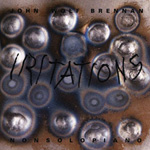 The “archaeology of the present time” comes in looking at all the “scraps” dispersed and disposed of by the crazy spinning roundabout of our consumer society even faster than they were produced... I see the artist of today rather as an “arrière-gardist”—in the sense that someone has to clean up all that so-called “rubbish”... sometimes it turns out to be the perfect raw material for new music. If this seems rather abstract, listen to my solo piano albums Iritations, Flügel, Text, Context, Co-Text & Co-Co-Text, and also the very first one, made in New York in 1989, entitled The Beauty of Fractals. The “archaeology of the present time” comes in looking at all the “scraps” dispersed and disposed of by the crazy spinning roundabout of our consumer society even faster than they were produced... I see the artist of today rather as an “arrière-gardist”—in the sense that someone has to clean up all that so-called “rubbish”... sometimes it turns out to be the perfect raw material for new music. If this seems rather abstract, listen to my solo piano albums Iritations, Flügel, Text, Context, Co-Text & Co-Co-Text, and also the very first one, made in New York in 1989, entitled The Beauty of Fractals.
Do you consider yourself a jazz artist, or is your music under the moniker “new music”? “Jazz is the freedom of form, the freedom to play anything,” Duke Ellington once said. During the 20th century, the art of improvisation got lost in most other music styles, especially in the European classical tradition. During the same period, jazz discovered, cultivated, nurtured, and developed a major language of improvised music. Today, there are many dialects, just take—on one side—the “classical chamber music” approach of Jan Garbarek, John Zorn’s Masada, or Dave Douglas’ acoustic Charms of the Night Sky quartet, or among my own groups, Pago Libre or Pipelines. On the other extreme, you have the continuing “free blowing fraction” of Cecil Taylor, Evan Parker, Peter Brötzmann, Mats Gustafsson or my own sonic adventures with Christy Doran & Patrice Héral (Triangulation), Gene Coleman (MOMENTUM 1, 2, 3 & 4), Peggy Lee & Dylan van der Schyff (Zero Heroes) and Simon Picard & Eddie Prévost (Entropology). Quite far apart, one could argue—apart but still a part of this exciting common global language we call jazz. At the same time, my music is “new music” for many ears. Some might call it “new jazz” or “contemporary music”. Often the very fact that improvisation is an essential part of a style gives it a “jazz” sticker, for lack of a better expression, even though its roots are quite far away from Harlem, Chicago, or New Orleans. What the heck... as long as people are coming to the concerts, and you can find the CDs in the store or on the Internet, labels don’t really matter anymore. Looking at your education it would seem to exemplify a fairly new mish-mash of contemporary sources. “Mish-mash” is the perfect term... coming from Yiddish, doesn’t it? American flutist Robert Dick (with whom I recorded the award-winning trio Aurealis) used to say “schleppen”, “schmuck”, “Schlamassel”, and “Tohuwabohu”, so I learned about Hebrew expressions entering the New York slang (often via German—ironic, isn’t it?). Yes, I spent many, probably too many years studying musicology (a subject that turned out to be an extremly dry matter!), literature, and film, apart from the usual studies in music (piano, pipe organ, choral conducting, dance, counterpoint, the pedagogical skills to teach), but at least to some extent I was able to use some of this pile of knowledge. Already during my studies I started to compose music for theater. This offers three advantages for a young composer: (1) your music gets paid (a little), (2) often you have to write for the most unusual instrumentation and very fast (the director needs the score yesterday...), and (3) your music actually gets performed, sometimes even several times. So it’s an eldorado for someone who wants to learn the “tricks of the trade” fast and in a multitude of contexts. There are many parallels between words and music, and in my work I have tried to concentrate much more on the common bonds between the arts (literature, sculpture, paintings, dance, film) than on the borderlines. Sometimes I wonder if these borderlines exist at all, or if they are only “handy“ virtual guidelines to help the poor critics and journalists to keep their shelved pigeon holes tidy... I’d rather go for the whole than the hole! So, yes, my education is probably quite a mish-mash, but so far I think it has been a fairly solid ground to stand on. And let’s not forget, that any academic education is only as good as it brings you to the next traffic crossing. From there on it’s, to quote Paul Motian, “jazz on the road, man!”—the time-honored “university of the streets”! In other words: I think I learned the bulk of what I know today about music from “the others”, playing it, getting together with other musicians from all over the world, learning by doing, by trial (always), success (sometimes), and error (often enough). Jazz has come to be the predominant music that gives most music listeners our conception of improvisation. You, however, have an approach towards improvisation that is culled from other sources? 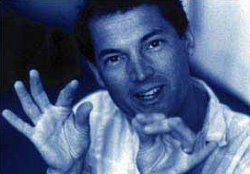 As a teenager, I was very much attracted by guitarists, singers, and rock groups in general: Jimi Hendrix, the Cream with Eric Clapton and Jack Bruce, the Beatles, Frank Zappa, Deep Purple, Jethro Tull, Led Zeppelin, Pink Floyd, Traffic, Blind Faith, the Doors, Blood, Sweat & Tears, The Flock, Chicago, and Santana. My first live experience I got at 15, plucking a vintage bass guitar (!) with a rock/R&B group, playing mostly cover versions of our admired heroes. So in terms of inspiration for my own improvisations, Jimmy Page and Jimi Hendrix were probably at least as predominant as the jazz players were later on, which at this time I didn’t even know. As a teenager, I was very much attracted by guitarists, singers, and rock groups in general: Jimi Hendrix, the Cream with Eric Clapton and Jack Bruce, the Beatles, Frank Zappa, Deep Purple, Jethro Tull, Led Zeppelin, Pink Floyd, Traffic, Blind Faith, the Doors, Blood, Sweat & Tears, The Flock, Chicago, and Santana. My first live experience I got at 15, plucking a vintage bass guitar (!) with a rock/R&B group, playing mostly cover versions of our admired heroes. So in terms of inspiration for my own improvisations, Jimmy Page and Jimi Hendrix were probably at least as predominant as the jazz players were later on, which at this time I didn’t even know.
Another important source of inspiration was the contemporary and classical tradition: the concepts of “music by chance” by John Cage (I was privileged to work with him), the music of Charles Ives, Igor Stravinsky, Béla Bartók, Steve Reich, György Ligeti, Pierre Boulez, Olivier Messiaen, Astor Piazzolla, and Maurice Ravel, visiting master classes in composition with Ennio Morricone, Heinz Holliger, Klaus Huber, and Edison Denisov, and the bizarre “musique d’ameublement” by Erik Satie. Then, there was a time I delved into “progressive rock”: Henry Cow, Soft Machine, King Crimson, Gentle Giant, the early Yes and Genesis, Hatfield & the North, National Health, and even—don’t laugh!—some early ELP (deduct the hype, go for the music, there’s plenty to discover!), and—now I’m afraid some hardcore readers might feel slightly irritated—the Police, Peter Gabriel, Sting, and—I beg your pardon?—yes, even Elton John, of the Madman across the Water / Yellowbrick period... a truly shocking, eccentric-eclectic taste for an avant-garde musician, isn’t it? But in the end, there are only two kinds of music: the good—and the useless. Also, I always continued to hear a lot of ethnic music, which I found easy to access because of my own hefty exposure to Irish traditional music as a kid and then, once we moved to Switzerland, to the music of the Swiss mountains, the Alps, with the alphorn in the center. The alphorn has come a long way, and I am honored to work with two of the foremost alphorn soloists in the world: Hans Kennel (Mytha, Pipelines) and Arkady Shilkloper, member of Pago Libre. In jazz Cecil Taylor has been the embodiment of avant-garde piano—is he equally regarded in “new music”/classical circles? 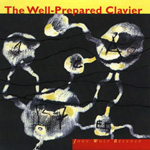 Equally regarded? Maybe not among the “purist” new music circles, because many academics simply don’t look over their garden fences, as it were, but certainly among the more open spirits. There are many great classical players who know his work, for example Marianne Schroeder (who is in her own right a famous interpreter of John Cage, Giacinto Scelsi, Morton Feldman, and Karlheinz Stockhausen; on The Well-Prepared Clavier, we play a piano duet, recorded live in Moscow at the Alternativa Festival), John Tilbury (AMM), or Paolo Alvares. But there are not many pianists who are equally at ease on both sides of the borderlines, which still exist—mostly in the heads of some critics. Equally regarded? Maybe not among the “purist” new music circles, because many academics simply don’t look over their garden fences, as it were, but certainly among the more open spirits. There are many great classical players who know his work, for example Marianne Schroeder (who is in her own right a famous interpreter of John Cage, Giacinto Scelsi, Morton Feldman, and Karlheinz Stockhausen; on The Well-Prepared Clavier, we play a piano duet, recorded live in Moscow at the Alternativa Festival), John Tilbury (AMM), or Paolo Alvares. But there are not many pianists who are equally at ease on both sides of the borderlines, which still exist—mostly in the heads of some critics.
Please delve into the history of Pago Libre and HeXtet? The quartet Pago Libre has been my main focus for 15 years now, and has become nearly a household word among brighter jazz music lovers all over the world, so you can imagine that this group would merit the full space of this interview alone... Contrary to popular belief, “pago libre” is not an Italian expression, but an acronym of the founding members’ names, back in 1989: Italian bassist Daniele PAtumi, native American violinist Steve GOodman, and Swedish trumpeter Lars LIndvall. If you add Irish-Swiss pianist John Wolf BREnnan, you get the basic receipe of this seminal group: five or even six “nations” in one quartet; drums-less, yet with a strong focus on intricate rhythms (you might as well say if you ain’t got a drummer everyone needs to step in and take a share in this role!); classical chamber music, yet with a highly developed edge on drive and even swing; avant-garde touch in its architecture and carefully crafted texture, yet still quite accessible with its downright beautiful, sometimes even hummable tunes, especially because of the folk influences from Ireland, the Swiss Alps, Moldavia, Russia, the Viennese waltz and polka traditions, the folk dances of Umbria, Karelia, Scandinavia, and so on. An explosive blend! Shortly after the first tour in 1989, Goodman left and was replaced by Austrian violinist Tscho Theissing. In October 1994, Russian French horn player Arkady Shilkloper (replacing Lindvall) became the fourth member. Since then, Pago Libre has emerged as one of the top European jazz groups. It’s no small wonder that we managed to survive over such a long period of time, because success only started after our acclaimed concert tours in China in November 2002 (our performance at the Forbidden City Concert Hall in Beijing was one of the highlights!) and Canada in June 2003, where we performed at the Vancouver Jazz Festival, in quartet as well as sextet, adding Peggy Lee (cello) and Dylan van der Schyff (percussion). To me, our music seems like a carefully controlled alchemical process, evolving along the songlines of some hidden earth meridians, exploding with the violence of a volcanic eruption, dancing on the cliffs of dangerous rhythms, haunted by a melody, obsessed by a backbeat, singing with unashamed lyricism. The classical sound prevails, but its equilibrium is often abandoned in favour of aural adventures, drawing on the various traditions of jazz, ethnic, and classical music in Russia, Switzerland, Ireland, and Vienna. We try to raise our own, unique voice. Free improvisation, a European touch of contemporary composition and a Mediterranean jazz feel play equal roles, so do humor and e/motion. This lineup remained stable for more than eight years, and Pago Libre played concerts all over Europe and in Russia. The quartet recorded an eponymous CD in 1996 (reissued in 2002 on Leo Records) and a live album, Wake Up Call—Live in Italy, in 1999, also on Leo Records. It took another two years for its follow-up Cinémagique (TCB/The Montreux Label) to see the light of day. The latest live recording, Phoenix, was released in 2003, again on Leo Records. Starting with our first tour in Canada and the Jazz Festival Mulhouse in France in Summer 2003, Austrian award-winning bass virtuoso Georg Breinschmid (of the Vienna Art Orchestra) replaced Daniele Patumi, leaving me as the only founding member. 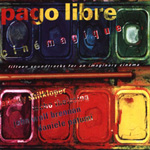 Lately, Pago Libre has begun to develop transdisciplinary projects in the fields of contemporary dance, film, and literature: Phoenix—a collaboration with Tanztheater Wien and famous British choreographer Liz King, created at Feldkirch Festival 2004; new live music to Alfred Hitchcock’s last silent movie Blackmail; and PlatzDADA!—an evening featuring the bizarre poetry of Hans Arp, Kurt Schwitters, and Daniil Charms, with guest performers Agnes Heginger (voice) and Patrice Héral (percussion, voice). Lately, Pago Libre has begun to develop transdisciplinary projects in the fields of contemporary dance, film, and literature: Phoenix—a collaboration with Tanztheater Wien and famous British choreographer Liz King, created at Feldkirch Festival 2004; new live music to Alfred Hitchcock’s last silent movie Blackmail; and PlatzDADA!—an evening featuring the bizarre poetry of Hans Arp, Kurt Schwitters, and Daniil Charms, with guest performers Agnes Heginger (voice) and Patrice Héral (percussion, voice).
Our new album, entitled Stepping Out, will be released hopefully on ENJA records in early summer of this year. On your side of the Atlantic Ocean, probably Dave Douglas (Charms of the Night Sky) and maybe John Zorn’s Masada are closest to the typical Pago Libre sound, but having said this—please check it out yourself, it’s truly unique! It’s quite a different story with my sextet HeXtet. First came Edgar Allan Poe’s poem “The Valley of Unrest”. It triggered off the idea for this POEms PrOjEct, and subsequently the other poems closed in, mostly written by contemporary Irish and British poets (even Shakespeare’s sardonically bitter love requiem is very up-to-date!), forming a suite of eight, interspersed and linked with five echoes. Then came the choice of the voice. Mozart used to “write a tune into the gargle of the singer”. I happened to meet Julie Tippetts (née Driscoll, she was one of my heroines in the late sixties!) at Ruvo di Puglia Festival in Italy in 1996, where she was performing with her pianist husband Keith, and I with Pago Libre. Then I got a grant from a Swiss Arts Foundation to live and work in London‘s East End for half a year. I had already worked with bassoonist Lindsay Cooper before (former member of Henry Cow; see Creative Works Orchestra live in Willisau), so I started to work on the concept, discussing it with Lindsay. Then I met legendary players like saxophonist Evan Parker (check out his incredibly hilarious tenor solo on the fake reggae rhythm of “Where art is a midwife”!), drummer Chris Cutler (also ex-Henry Cow), and trombonist Paul Rutherford (he and Evan being longtime members of the Brotherhood of Breath), and they all were quite happy to work on this project. Sadly, because of an illness, Lindsay had to be replaced, but bass clarinetist Peter Whyman (suggested by Mike Westbrook) gave a very intensive input. The rehearsals and recording session in London were a sheer delight, and the only drop of bitterness about this group is that it NEVER got a single chance to perform the music live, although the album got extremely enthusiastic reviews, many of them four and five stars. Some festival organisers seemed to like it a lot, but never called... So, sadly, I guess listening to the CD is your only chance to hear it. The concept of prepared piano seems to be so incidental—how does a pianist study it as an actual technique? As a little boy, the first thing I dug into was the strings of the piano. Many years later, my father told me stories how he always pointed at the black and white keys and tried to convince me that this was the appropriate way to tackle the piano but I didn’t want to listen to him. I fancied the piano to be a horizontal harp, mirroring the Celtic harp my mother was plucking, but much more embedded in this black coffin with the resonant pedal which my little feet could not yet reach, so I had to squeeze a piece of wood into the gap. I then dived into this sea of sounds, scooping up, sweeping away, dreaming of tiny little stardust sounds that I later learned to be “overtones”. So, going back in my own biography, the seeds of my concepts of “prepared piano” probably started to grow right inside that vintage Blüthner piano in our living room. And as the Irish say: “If you want any more, you can sing it yourself”... the modern version of this song would go: if you want to delve further into this matter, please listen to my fourth solo piano album The Well-Prepared Clavier (Creative Works, 1998). This album became nearly a “cult thing“ here and also works as a kind of encylopedia of “every sound you always wanted to hear from a normal Steinway grand, but didn’t dare...” And don’t worry: it’s not a boring school exercise. Listening to it, a lot of fun is guaranteed. John Corbett (Chicago) wrote the liner notes. So actually, I don’t really believe in “accidents and incidents in life”—I guess it had to happen that way, for reasons we cannot (and thank God don’t have to!) understand. Is your opera Night Shift (based on the W.H. Auden’s novel The Age of Anxiety) your first foray into the opera form? How do you approach working with the operatic form? Since we’re all humans—not binary computers—it’s “yes” and “no” at the same time. Yes, because together with Rudolph Straub I started working on the libretto and composed the whole vocal score in 2001; no, because my second opera Güdelmäntig (“Carneval Monday”, based on a libretto by famous Swiss writer Thomas Hürlimann) actually received its first performance in September 2004. All the performances were sold out, and because of this success several opera houses suddenly were interested in my first opera... As things now stand, Night Shift will be produced at the Theatre in St. Gallen (an Eastern-Swiss city founded by Irish monk St. Gall some 1,400 years ago!) in February 2007. Since my time at the University in Fribourg (where I studied musicology, literature. and film), I wrote more than 40 works for theater, plus a multitude of sound installations, dance theaters and transdisciplinary art performances, so the opera as the “king’s discipline” of music drama seemed like a natural quest. Of course, it’s a formidable task to tackle the whole form in terms of dramatic plot, monologues and dialogues, timbral shades, voicings, choral textures, instrumentation, dynamics, registers, counterpoint, and numerous other parameters, but in principle it’s not that much different from writing a good song. When Claudio Monteverdi created his operas in Renaissance time, he invented the first multi-media show in history—as a matter of fact “opera” is the Italian plural word for “opus”, so in some mysterious way it’s like writing a hologram, in which every part is the whole and the whole turns out to be a part again of a larger entity. My experience with self-similar and fractal forms (on The Beauty of Fractals, Triangulation, Momentum, Entropology, Sculpted Sound) also helped to shape the non-linear, horizontal dimensions of the melodies and the momentum of the polyrhythms without getting lost in the vertical harmony too soon. The single most important relationship, however, is the one between the (unspoken) word and the (spoken) sound, between literature and music, between lyrics and notes, between the lines, even between the betweens. Two of the key phases of your career have been the “blue trilogy” and the “yellow trilogy”. Describe the overall concept behind this work? My first solo piano album, The Beauty of Fractals, was conceived and composed in New York City, where I lived in 1988 in a tiny village flat near Washington Square, and “West 9th Street” became the first title of this album. By the way, a time arc jumping to the very present starts from there, because a revamped version of this tune can be heard on the brand new Pago Libre album Stepping Out. In 1990, I wrote Iritations, my second solo piano album, mostly in Japan, and in 1993 I won another grant to spend three months at the Tyrone Guthrie Centre at the Irish-Northern Irish borderline, where number three of the first (blue) trilogy was developed, entitled Text, Context, Co-Text & Co-Co-Text. Only then I started to think on a larger meta-level about my solo work, and hence the idea of a “trilogy of trilogies” was born. So the overall concept came only after the first third was completed. With number four, The Well-Prepared Clavier, conceived in London in 1997, number five Flügel—at last made in Switzerland in 2002—and The Speed of Dark (not yet recorded, I hope sometime in 2005), the second (yellow) trilogy soon will also be completed, whereas most of the last (red) trilogy still sleeps up in the stars. If I manage to finish the third part sometime by 2011, the whole cycle will hopefully sum up my personal pianistic universe in nine albums over a time span of 23 years, ill- or well-prepared as it may be. Please talk about some of the jazz associations which you have had: Peggy Lee, Dylan van der Schyff, Ray Anderson, Elton Dean, Peter Schärli, and Tim Berne being just some of your collaborations. During a solo piano tour in Canada and the U.S. West Coast in March 2002 I was also invited to play at the Western Front in Vancouver, and Ken Pickering, director of the Vancouver Jazz Festival, suggested to do two or three pieces in trio with Peggy Lee (cello) and Dylan van der Schyff (drums). I had never met these two before, so I was very excited, and when we actually got together that afternoon, I decided to turn around the concept and make it a trio gig with some short solos in between. After just two hours of rehearsing, the concert went down very well that evening. Luckily it was recorded by Brad Turner, an ace trumpet player himself. I sent on the CD of the live concert to Leo Feigin (head of Leo Records, UK), and he immediately decided to release it... so Zero Heroes was born! The funny thing is, that I spent probably ten times longer to find the right titles for the tunes than it took us to play them! Tim Berne and Ray Anderson were giving workshops in Lucerne, so I joined the tiny group of students (never stop to study, anyway!). Elton Dean I met in London, where I was living for a year in 1997. We played in a jazz club called Vortex, together with Simon Picard and drummer Mark Sanders. With trumpet player Peter Schärli, time goes back to the very beginnings of my career: as early as 1977 we started off a DADA-inspired duo called Freemprovisations, both studying at the Swiss Jazz School in Bern at that time. Later on he played in several of my orchestras and ensembles (No-nätt, Creative Works Orchestra, OrganIC VoICes with German singer Gabriele Hasler, and the tango band Broken Dreams with singer Alexandra Prusa). All these players are great, but life is just too short to fulfill all the dreams we have, isn’t it? And on another note: ultimately, you have to make a choice between fame and family. Our three girls keep us busy most of the time, so I opted many years ago for the family, and I never regretted this decision. Music is the most beautiful noise you can make in life, but it’s not the only one. |

